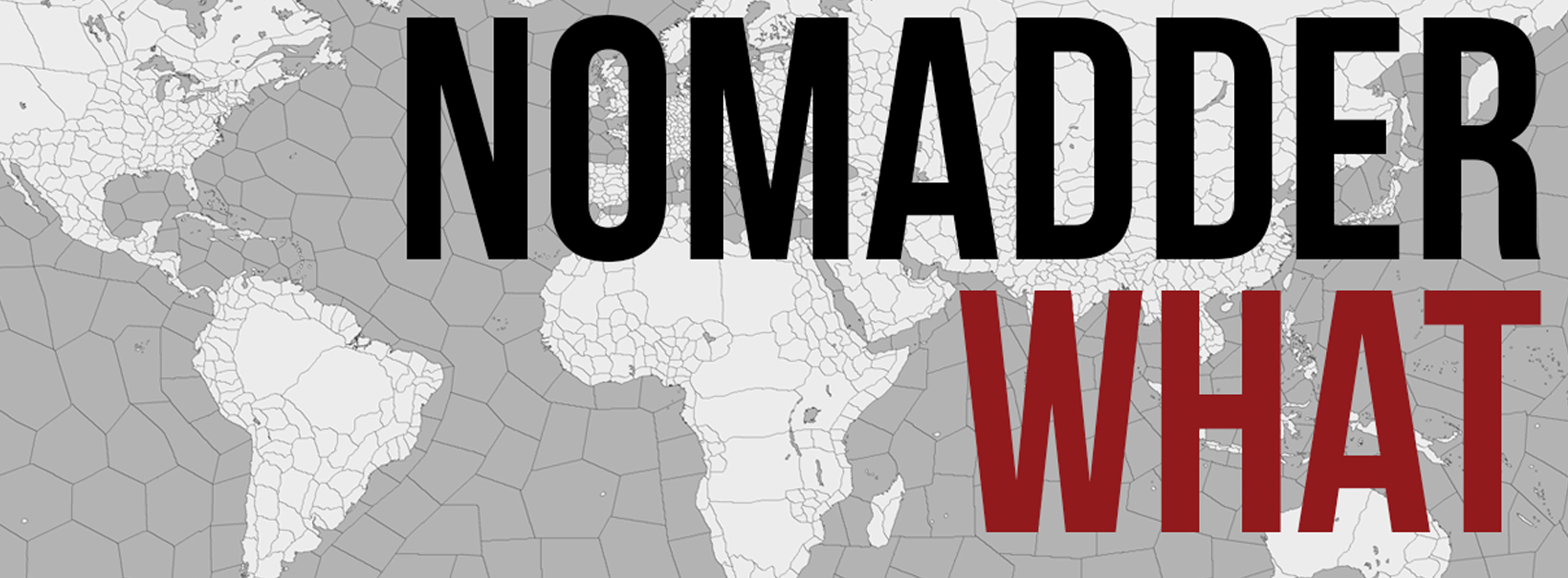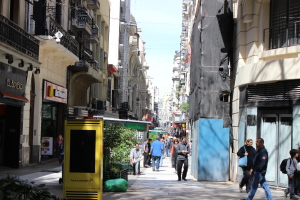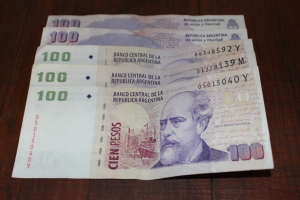If you’re in Buenos Aires and need some spending cash, forget going to a bank or ATM. I naively went to an ATM the first two times I needed cash and received the current Argentinian exchange rate at about 8.50 Pesos per U.S. Dollar. Being new to Buenos Aires and not really having talked to anyone yet, I assumed this was the only way to go. Well, you know what happens when you assume.
While in Santiago, Chile, I mentioned to a couple of people that my next stop was Buenos Aires. They told me to make sure I exchange money on the Argentinian black market and not to waste my time at ATMs or banks. Normally one to shy away from illegal activities (especially those that include the words “black market”), I shrugged it off without thinking much of it. However, once I arrived to my hostel and began speaking to locals and other travelers, I now realize that the black market is the only way to go.
The first day I needed money, a nice, young British girl who worked at the hostel I was staying at said she needed cash and was going to head over to exchange her own dollars on the black market, so I asked if I could tag along. We walked over to Florida Street, a bustling and popular shopping area including the likes of Polo Ralph Lauren among many other retailers. As soon as we turned onto the street we were immersed in a wave of people calling out “Cambio!”, which is Spanish for “change”. I’m pretty sure we found the spot!
We walked past a few people calling out “Cambio!” until my friend spotted a guy that looked like a good dealer. I’m not sure if it was because he was sitting on a bench or just the twinkle in his eye, but she approached him and asked his current rate. Since local newspapers such as “La Nacion” publish the “blue” rate spread daily, we knew whether or not he was in line with the current rate – which was another indication to me that this was merely “frowned upon” seeing as in I’ve never heard of newspapers publishing current black market anything.
When we agreed upon the current rate of 14.10 Pesos per U.S. Dollar we followed him a couple of blocks into a nearby discrete building. All of the dealers are fairly nice, greet you with a handshake or “kissing on the cheeks” custom, and will chit-chat with you along the way. Not that that makes any difference, but hey, as this was my virgin voyage it eased how I felt quite a bit. As we walked into the “office” we saw a few people waiting in chairs (kind of like a bank) and when it was our turn we approached this teller-like window in the wall (exactly like a bank). The woman asked our dealer the rate, he told her 14.10 Pesos, and before we knew it, we had our Pesos and were out the door!
You might be thinking, “oh, they probably just give you counterfeit money or something of the like”. I’m here to tell you that’s not the case at all. Sure, some dealers might try to sneak in a bill or two that maybe they got scammed on themselves, but every bill I’ve seen so far has been 100% real. Hell, I even took a 3-hour walking tour of the city, and during the “economics” portion of the tour, our own tour guide showed us Florida Street and told us this was the only place we should exchange our money. Once again, any worries I initially had about the black market were practically gone. And this is why…
The Argentinian Pesos are worthless. The past couple of years Argentina has seen inflation rates between 30-35% per year. This year inflation is already at 37.4% – just think about that. Argentinians are practically forced to spend their money as soon as they earn it or it becomes worth dramatically less not only within the year, but more often than not, within a few months. Since the U.S. Dollar and economy remains relatively steady, especially by Argentinian standards, they attempt to collect dollars like little kids collect baseball cards. However, the banks refuse to give anyone a single U.S. Dollar. So what happens? Exactly what I just explained.
If locals or tourists want to get U.S. Dollars, they have to travel to nearby Uruguay to take out USD from banks, and then come back and exchange them on the black market. However, as you might be wondering just like I did, who loses on this deal? Well… basically the government, economy, and people who want to save their money.
People like me and you who are tourists or locals who are just trying to live their lives are doing well as they’re receiving amazing exchange rates. Dealers are doing well as… well they’re dealers, and you know they’re not going to lose. The people that lose are the government and people looking to save their money, but they’re rich enough that they don’t care about the exchange rate. So I give my 1 USD and receive 14.10 Pesos in return. The dealer then takes that 1 USD and exchanges it for a rate higher than 14.10 Pesos to someone who wants U.S. Dollars that won’t lose value – around 14.20-14.50 Pesos per dollar as stated by “La Nacion”, which seems like such a small profit margin that you wonder what else they’re probably doing to make money. Nonetheless, the people win because everything costs nearly half as much as normal. The dealers win, as dealers usually do. And the rich win as they now have money that won’t be worth nearly half as much within a year.
So do I recommend that you exchange money on the Argentinian black market? Legally I guess I should say no. But seeing as in every local and even tour guides recommend it, all I have to say is, “When in Rome…”








